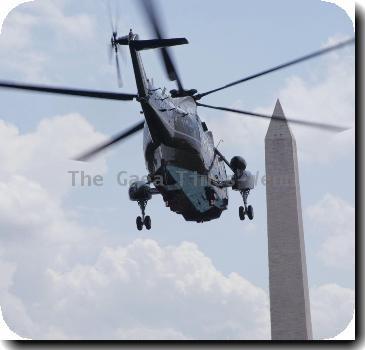US funds, military equipment pour into fight against al-Qaida safe havens in Yemen
By Lolita C. Baldor, APThursday, December 24, 2009
Battle against al-Qaida stepped up in Yemen
WASHINGTON — The Pentagon has poured nearly $70 million in military aid to Yemen this year, a massive financial infusion aimed at eliminating the expanding al-Qaida safe havens in that country.
Airstrikes Thursday in Yemen’s Shabwa province, in which at least 30 suspected militants were said to have been killed, is evidence of Yemen’s more aggressive efforts against al-Qaida.
The U.S. spending in the fast-growing campaign to better equip and fund Yemeni forces compares with no spending in 2008.
Much like the effort with Pakistan’s Frontier Corps, the U.S. military has boosted its counterterrorism training for Yemeni forces, and is providing more intelligence, which probably includes surveillance by unmanned drones, according to U.S. officials and analysts.
The heightened attention comes at a politically sensitive time, as the U.S. and Yemen continue talks on the possible transfer of Yemeni detainees in the Guantanamo Bay facility in Cuba back to their homeland. The transfer is critical to President Barack Obama’s pledge to shut down Guantanamo, but U.S. leaders are not convinced that Yemen is prepared to handle the detainees, or that they won’t simply be set free.
Information about any spike in U.S. involvement — including an airstrike last week, which missed a key al-Qaida leader but killed other militants and, reportedly, some civilians — is closely guarded by Yemeni authorities, who fear that a visible American role in the country will fuel internal conflicts.
As a result, observers can only whisper about Americans coming and going at an increasing rate from a military base in northwest Yemen, or the sightings of new aircraft and drones in the skies above.
The training sessions are generally small-scale events that last a few weeks, and the number of military trainers in the country has fluctuated over time, said a senior defense official. The official said the counterterrorism training has varied from ground combat to air and maritime instruction.
“The U.S. presence is certainly growing there,” said Gregory Johnsen, a Yemen expert at Princeton University, who regularly visits the country. He said it was particularly evident at the U.S. embassy this summer, when he was last in the country.
That increase, along with the recent strikes, may only result in more support for al-Qaida in Yemen and stir up anti-government factions, he said.
“In the end it’s probably counterproductive,” said Johnsen, adding that video and photos of women and children killed by the blast could create “a recruiting field day for al-Qaida.”
U.S. officials will not publicly confirm participation in last week’s strike, and will only offer broad comments about U.S. activities in Yemen.
“We continue to provide advice, training and equipment to both Saudi Arabia and Yemen as part of our ongoing security cooperation,” said State Department spokesman P.J. Crowley.
Others, however, acknowledge U.S. involvement in the bombing, and say the U.S. is providing increased logistical and surveillance support to Yemen in its campaign to stamp out the resurgent al-Qaida militancy in the vast ungoverned spaces.
The operation is the culmination of a strategy shift that occurred about a year ago, when the United States determined that the two key centers in the fight against al-Qaida are Yemen, located on the southern tip of the Saudi Arabian peninsula, and Pakistan, a military official with direct knowledge of the strategy told The Associated Press.
The officials, who spoke on condition of anonymity because of the secretive nature of the operations, say the support comes at the request of Yemen.
Crowley flatly denied suggestions that the U.S. is getting involved in Yemen’s internal war with Shiite Hawthi rebels in the north, saying “we have no direct role in what’s happening along the border.”
Saudi Arabia launched an air and ground offensive in the north against the Yemeni rebels on Nov. 5, after skirmishes along the border.
Many believe that conflict has evolved into a clash between U.S. ally Saudi Arabia and Shiite Iran, accused by Yemen of backing the rebels. The Shiite rebels charge that the Yemeni government is allied with hardline Sunnis. Tehran has denied any involvement.
Visits to Yemen by U.S. diplomats and military leaders, pressuring the government to step up its campaign against al-Qaida, have been steady.
Yemeni officials, meanwhile, stress that they need better equipment and other aid.
This year, the U.S. complied, with plans to provide more than $30 million for ships and other equipment for the Coast Guard, $25 million for border security, and about $6 million for helicopters with night cameras.
Christopher Boucek, a Yemen expert at the Washington-based Carnegie Endowment for International Peace, said direct military involvement in Yemen will not adequately address the problem.
“We need to build local capacity to deal with the issues on their own,” said Boucek. “There is a lot we can do to address the issue short of dropping bombs.”
Al-Qaida’s operatives in Yemen and Saudi Arabia merged early this year to become al-Qaida in the Arabian Peninsula, or AQAP. U.S. intelligence officials said that was followed by more recruiting and efforts — mostly unsuccessful — by those operatives to cross the border from Yemen into Saudi Arabia.
AQAP has also made it clear in communications through the Internet and by other means that it intends to target Western interests across the Arabian peninsula.
Associated Press writers Pamela Hess, Ben Feller and Matthew Lee in Washington and Sarah El Deeb in Cairo contributed to this report.
On the Net:
Defense Department: www.defenselink.mil
Tags: Barack Obama, Middle East, National Security, North America, Saudi Arabia, Terrorism, United States, Washington, Yemen

